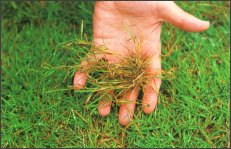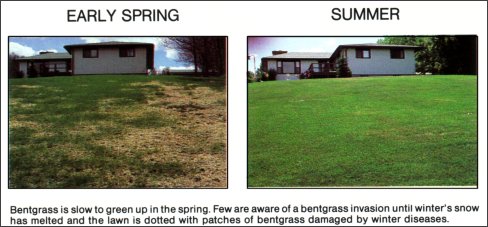Your Cart

 Thick, green lawns are ideal for invasion by native creeping Bentgrass.
Thick, green lawns are ideal for invasion by native creeping Bentgrass.
Lawns across the country are infested with the troublesome weed grass, Bentgrass. Bentgrass reproduces most often by sprawling, above-ground stems. Roots are readily produced along these stems. Stems are transported by mowers and birds that favor these stems for nesting material.
- Bentgrass can form an attractive lawn if it is the only variety of grass present as, for example, on a golf course putting green. Usually Bentgrass is considered to be a nuisance in a home lawn because it requires so much care.
- Bentgrass is slow to green up in the spring. It requires more fertilizer and much more water than other grasses. It is very prone to attack by plant diseases and Bentgrass by nature creates a thick, spongy layer of thatch. Bentgrass is sensitive to warm temperatures and turns brown in summer heat.
- Bentgrass invasion is encouraged by light, frequent watering and short mowing.
- Bentgrass thrives in a maritime climate.
Few Weed Man clients are aware of a Bentgrass invasion until winter's snow has melted and the lawn is dotted with patches of Bentgrass damaged by winter diseases.

It may be best to remove Bentgrass patches or the entire lawn and replace it with new sod. Small amounts of Bentgrass can be gradually reduced. The reduction may take several seasons but the wait and work are well worth it.
- Identify the problem areas.
- Adjust lawn mower to cut at or above 2 inches (5 cm ).
- Water only when desirable grasses show drought symptoms.
- Rake to remove as much of the patch as possible. Raking must be repeated several times during the season. Seed or sod can be planted in the raked areas.
Patience and diligence are essential ingredients in this procedure. Ask your Weed Man for more tips on mowing and watering.